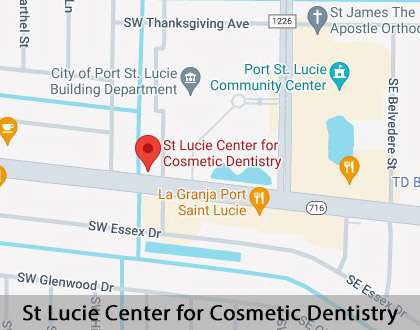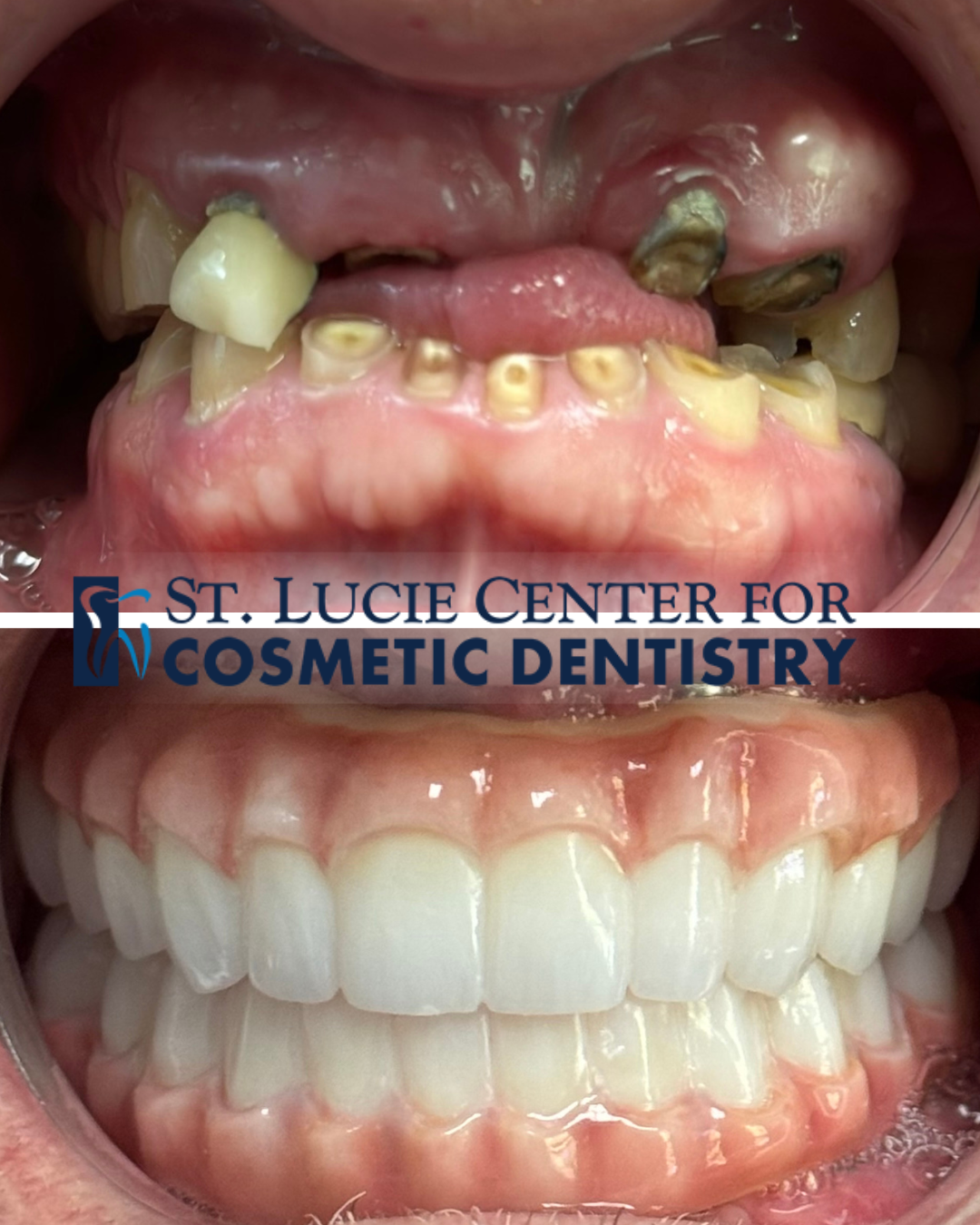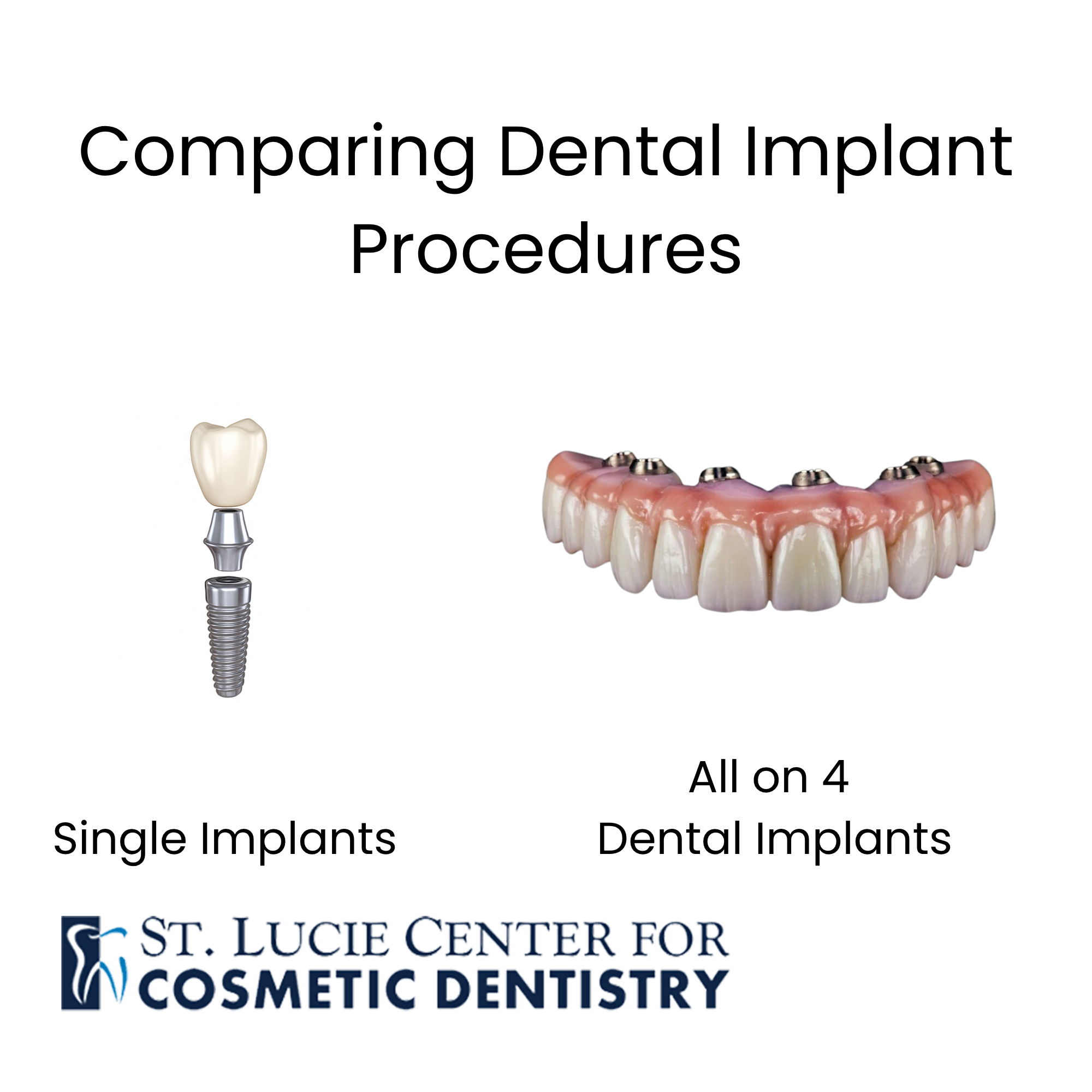7 Signs You Need Endodontic Surgery Port St. Lucie, FL
Endodontic surgery can give patients a second chance to save teeth that have been affected by infection or damage. There are various signs that people should be aware of, indicating the need for endodontic surgery. If you notice any of these signs, do not hesitate to schedule a dental examination to determine the extent of damage and cause of discomfort.
Endodontic surgery is available at St Lucie Center for Cosmetic Dentistry in Port St. Lucie and the surrounding area. Our team can help. Call us at (772) 242-4124 to learn more about our services or schedule an appointment.
Importance of Endodontic Surgery
Endodontic surgery can save a tooth in a variety of situations. It is often the last resort to save a tooth with problems associated with a root canal or when root canal therapy is not enough to save a tooth. Surgery prevents the need for tooth extraction, allowing patients to retain their natural smiles.
While many people experience fear at the thought of surgery, the notion that endodontic surgery is scary and painful is mistaken. Technological advancements and new techniques help patients remain safe and comfortable during their procedures. Many patients have endodontic surgery to remove discomfort as treatment clears any infection and repairs damage.
“Many patients have endodontic surgery to remove discomfort as treatment clears any infection and repairs damage.”
7 Signs You May Need Endodontic Surgery
Continuous Pain After a Professional Cleaning
Professional routine dental cleanings are often sufficient for removing plaque, tartar, and minor decay. However, decay that lies beneath the tooth's surface is unreachable and impossible to properly clean out during a professional cleaning. Patients who experience ongoing pain after a dental cleaning, especially around a specific tooth, likely suffer from an endodontic condition. Pain from severe decay in the pulp may make it difficult to chew on the specific tooth and the surrounding area of the mouth. In fact, the pain is usually persistent throughout the entire day.
Increased Sensitivity to Hot and Cold
Although sensitivity to hot and cold stimuli can result from a variety of oral conditions, endodontic surgery is often required when the cause of sensitivity is due to pulp damage. When sensitivity persists after ruling out all other factors, a root canal treatment is often necessary. A root canal results from a deep infection inside the tooth's root or pulp that can compromise the entire tooth if left untreated. Treating the infected tooth and removing the infection will likely reduce or eliminate hot and cold sensitivity.
“Although sensitivity to hot and cold stimuli can be the result of a variety of oral conditions, endodontic surgery is often required when the cause of sensitivity is due to pulp damage.”
Tenderness
Although many people experience some degree of tooth sensitivity, excessive oral tenderness when touching a tooth or chewing food is a symptom that may suggest the need for endodontic surgery. A tooth that sends sharp pain when chewing may be cracked or infected. If the damage is severe, endodontic surgery may be necessary to save the tooth.
When a tooth is painful to a slight touch, it is also a sign of a problem that may require endodontic surgery. Patients should not assume that this pain will disappear on its own. This pain will continue to persist and worsen until treatment can address the underlying endodontic problem.
“Although many people experience some degree of tooth sensitivity, excessive oral tenderness when touching a tooth or chewing food is a symptom that may suggest the need for endodontic surgery.”
Check out what others are saying about our dental services on Yelp: 7 Signs You Need Endodontic Surgery in Port St. Lucie, FL
Swelling or Drainage of Gums
Swollen gums are an obvious sign of infection and the need for endodontic treatment. The main cause of swelling is often plaque buildup, which in turn leads to infection. Gum drainage refers to draining the gums from an abscess or pus discharge. Drainage is typically the first step in endodontic surgery or root canal treatment. Following the surgery, the infection should be removed. The surgery will also reduce swelling and accumulation of pus and abscesses as the tooth is sealed off.
Abnormal Discoloration of a Tooth
Slight discoloration of the teeth is normal with age, depending on each individual's diet and hygiene habits. However, teeth that become a distinct yellow or brown color often exhibit an underlying problem. Endodontic surgery is recommended when tooth discoloration is coupled with other problematic symptoms such as infection, abscesses, tenderness, and swelling. In most cases, discoloration does not improve and cannot be reversed, but it can be stopped with treatment. Patients may choose to undergo whitening treatments after endodontic surgery to bring their natural color back.
“Gum drainage refers to draining the gums from an abscess or pus discharge.”
Questions Answered on This Page
Q. What is the importance of endodontic surgery?
Q. Should I have persistent pain after a professional cleaning?
Q. Are swelling or drainage of gums a sign of a problem?
Q. What should I do about a dental abscess at the bottom of the tooth's root?
People Also Ask
Q. What is the difference between endodontists and dentists?
Q. Are there any alternatives to root canals?
Q. What are some of the signs indicating a need for tooth extraction?
Dental Abscess at the Bottom of the Tooth’s Root
A dental abscess is an infection that contains pus and can often reside at the bottom of a tooth's root. Abscesses can be invisible when they are inside the tooth but are often detected when surgery is initiated. However, pain and tenderness in a tooth likely indicate the presence of an abscess. Treating the area through surgery removes the infection and the associated abscess.
Notice and Feel a Bump Near the Tooth
Aside from an abscess, other small bumps may form near the tooth somewhere on the gumline. Infection is often the primary cause of bumps on the gums. According to Healthline, these bumps can be a cyst, canker sore, fibroma, pyogenic granuloma, mandibular torus, or an oral cancer sore. Before undergoing endodontic surgery, we must first determine the type of bump or sore and its cause. In most cases, these bumps will dissipate with surgery. In more severe cases, as with oral cancer, the patient may need a different type of surgery.
“…bumps can be a cyst, canker sore, fibroma, pyogenic granuloma, mandibular torus, or an oral cancer sore.”
Frequently Asked Questions
Q. What are the types of endodontic surgeries?
A. Endodontic surgeries include apicoectomies, calcium deposit removals, and root canal treatments. An apicoectomy is a surgery to remove an infection in the root that results after root canal treatment. Calcium deposit removal involves cleaning and clearing the area from calcium accumulation to get the area ready for a root canal. Root canal treatments are the most common type of endodontic surgery to remove the infected pulp from the inner canal.
Q. Does endodontic surgery hurt?
A. Advancements in dental technology and improvements in anesthesia have allowed endodontic surgeries to be pain-free. Patients may experience slight discomfort and tenderness following the procedure, but that should dissipate within the first few days. We will also prescribe antibiotics and pain relief medication to reduce swelling, inflammation, and discomfort.
Q. Can I drive after the surgery?
A. This largely depends on the type of surgery the patient undergoes. In root canal treatments, patients can typically drive themselves home as we administer only a local anesthetic. For more severe conditions in which we use general anesthesia, the patient must arrange transportation the day of the procedure. The patient will be notified of this during the consultation appointment.
Q. How much does endodontic surgery cost?
A. The cost of surgery depends on the type of treatment and severity of the condition. We encourage patients to speak with their insurance provider prior to receiving treatment to better understand what their plan entails and what their co-pays may be.
Q. How long will it take to resume normal activities after surgery?
A. Patients should be able to resume normal activities the following day. However, if they feel pain, dizziness, or fatigue, rest is highly recommended. In cases of worsening symptoms, we encourage patients to contact us as soon as possible to schedule a follow-up.
Endodontic Terminology
Helpful Related Links
- American Dental Association (ADA). Glossary of Dental Clinical Terms. 2024
- American Academy of Cosmetic Dentistry® (AACD). Home Page. 2024
- WebMD. WebMD’s Oral Care Guide. 2024
About our business and website security
- St Lucie Center for Cosmetic Dentistry was established in 1984.
- We accept the following payment methods: American Express, Cash, Check, Discover, MasterCard, and Visa
- We serve patients from the following counties: St. Lucie County
- We serve patients from the following cities: Port St. Lucie, River Park, White City, Fort Pierce, Fort Pierce South, St Lucie West, Tradition, Palm City, Jensen Beach, and Stuart
- Norton Safe Web. View Details
- Trend Micro Site Safety Center. View Details
Back to top of 7 Signs You Need Endodontic Surgery















